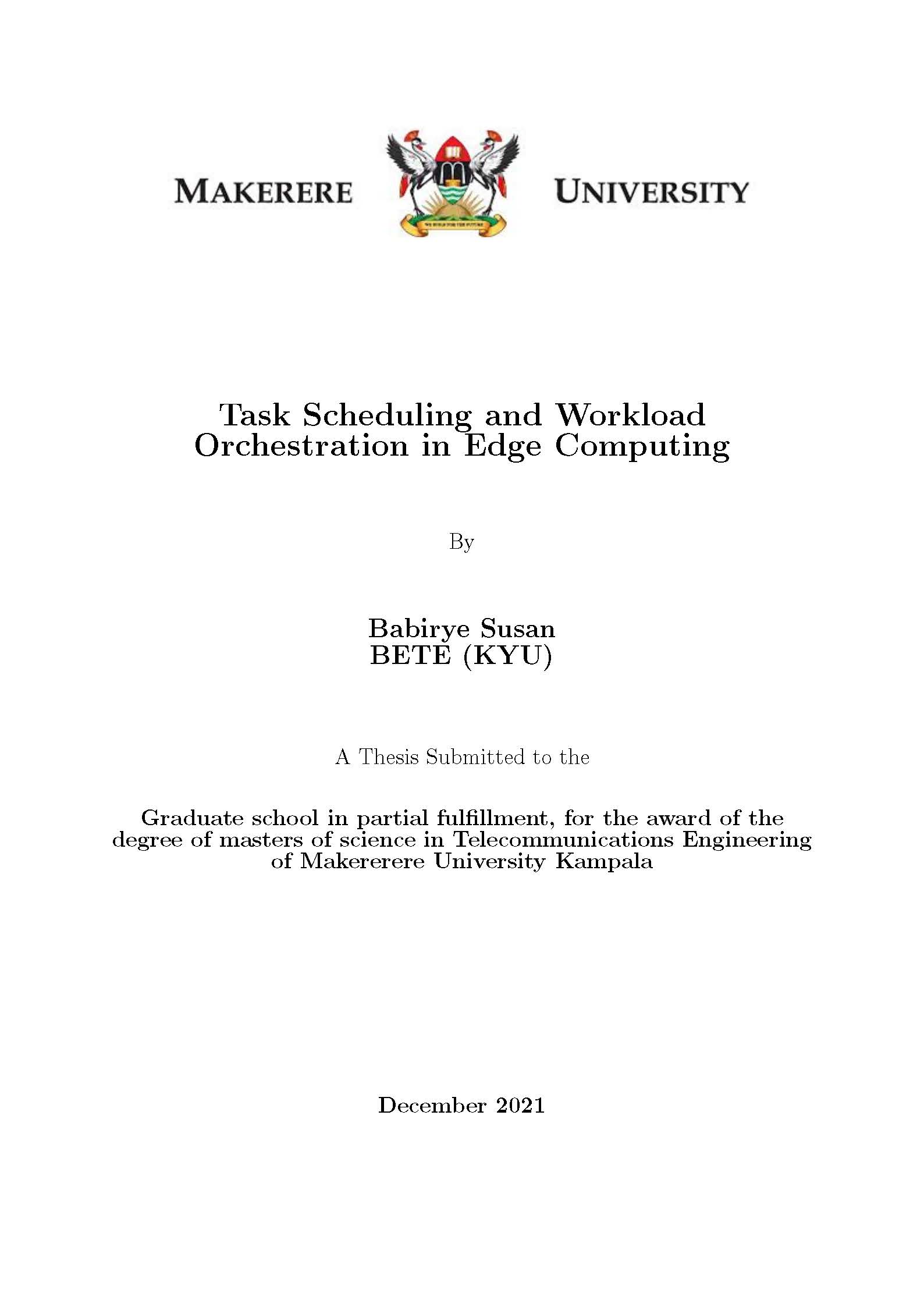Task scheduling and workload orchestration in edge computing
Abstract
An Edge Computing (EC) paradigm improves the quality of user experience when
dealing with low latency and real-time interactive applications. The technology allows
cloud services to be brought to the edge of the network closer to users rather than remote
cloud platforms. Some key advantages provided by EC include reduced transmission
delays, stable network connectivity and low latency. However, EC suffers from several
challenges including under or over utilization of edge servers, task failures due to user
mobility and network failures when connecting to the cloud. There is need to arduously
harness some key resources of EC including virtual machine (VM) and wide area network
(WAN) bandwidth in order to minimize those challenges. This can be achieved by task
scheduling and workload orchestration mechanisms that efficiently exploit these resources.
In this research, a task scheduling and workload orchestration problem was formulated
and solved by genetic based and resource-aware algorithms. Particularly, a task migration
scheme and a genetic algorithm (GA) to lower task failures due to user mobility
and improve edge server VM utilization were developed. Furthermore, a resource-aware
workload orchestration (RAWO) approach that considered VM utilization and WAN link
bandwidth for task scheduling and offloading to edge servers and the cloud was modeled.
Simulation results revealed that incorporating a task migration scheme and the proposed
genetic algorithm scheduling approach minimized task failures and improved the overall
edge server VM utilization. Results also showed that the RAWO approach reduced task
failures due to VM utilization capacity and WAN congestion. This was due to the fact
that the approach considered the average VM utilization and the WAN bandwidth while
offloading tasks to edge servers and the cloud servers. Comparisons between the singletier
and two-tier EC architectures were also carried out. Results showed that higher
VM utilization and lower task failures were achieved in the two-tier EC as compared to
single-tier EC for a high number of users. This was because the architecture offloaded
tasks to both edge servers and cloud servers.

